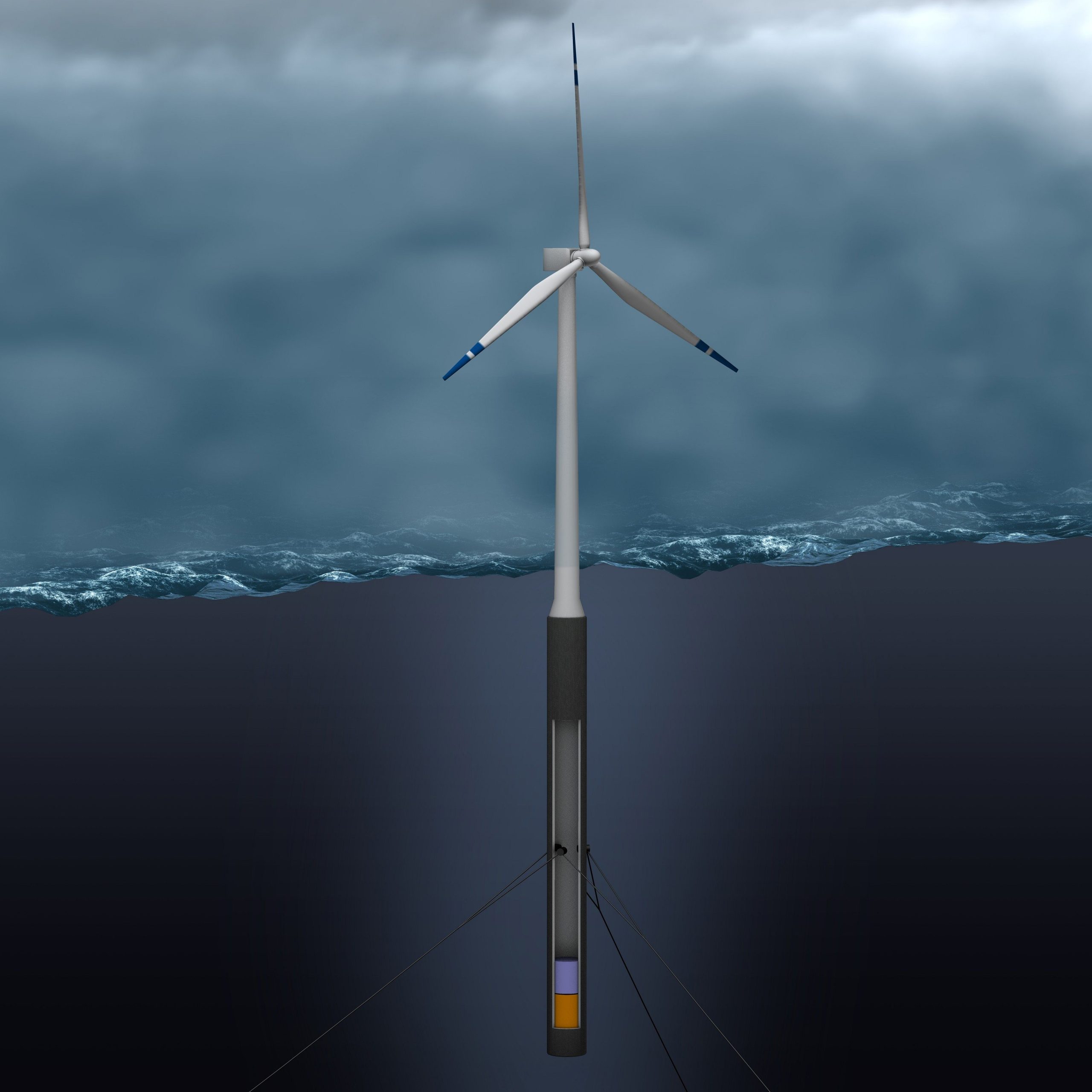Offshore wind energy is on the rise, but deployment is limited to water depths smaller than 50 metres. Next are floating wind turbines, which are still about 60% more expensive.
The depth map of the North Sea shows that shallow waters (50 metres or less) are limited from the Channel to a line between South-Scotland and North-Denmark. Beyond that, the bottom-mounted monopiles cannot be applied.
Half a dozen companies are developing floating wind turbines. The most advanced are the Hywind (developed by the Norwegian energy firm Statoil) and the Windfloat (US company with a demo off the coast of Portugal since 2009).
There are, as assistant professor Dr. Axelle Viré explained, some challenges in the development of floating offshore wind turbines. Dr. Viré presented a talk on this topic in the Energy Initiative lecture series last Monday, November 28, 2016. She mentioned developments in the turbine, mooring lines, electrical infrastructure, and operation and maintenance.
Because of the movements due to wind and waves, everything is more expensive in floating wind turbines than in fixed offshore turbines. Constructions are designed on the safe side, which may make them more expensive than they need to be.
Researchers in the wind energy group in the Faculty of Aerospace Engineering perform detailed calculations (computational fluid dynamics) to study the forces from wind and water on the floating structures. The graphs that Viré presented show a close correspondence between the models and tank tests.
Viré trusts that advanced mathematical models will contribute to bringing down the costs of floating offshore wind power. Reducing costs may prove to be essential once the suitable southern part of the North Sea has been covered with wind parks, and wind energy will have to venture into deeper waters.



Comments are closed.